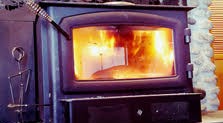Drip. Drip. Drip. That is not the sound you want to hear in your living room after a stormy night. While water is fabulous in your glass or in a pool, it is not such a good thing to have leaking through your roof.
Fortunately, there are maintenance procedures that can keep your roof in good condition and save you from setting up a row of buckets in your living room.
The average roof can last anywhere from 10 to 50 years. This huge variance in life expectancy is due to many factors, such as quality of the roofing product, how well the roof is maintained, weather, quality of installation, sun exposure, proper water drainage, and physical damage incurred.
Therefore, it can be difficult to use age as the sole indicator for the condition of a roof.
Instead, monitor your roof regularly for signs that it needs repairs or is nearing the end of its useful life. The most common roof types are asphalt shingles, metal, tar and gravel, and torch on.
With asphalt shingles you must watch for heavy loss of granular material, protruding nail heads, cracked, worn or damaged shingles, torn or lost shingles or tabs, and shingles that bulge or curl.
As for metal roofs, it is generally areas around the flashings and fasteners that tend to leak first. It is a good idea to keep a close eye on the chimneys and other roof penetrations where flashing is present.
Common problems with tar and gravel roofs are blisters or bubbles in the asphalt coat that can rupture and allow for leaks. Also, monitor for areas that are missing gravel as the exposed roof is more susceptible to UV damage.
Lastly, torch-on roofs show their age through granular loss, numerous cracking called “alligatoring”, and blistering.
Since no one wants to use an umbrella in their home, it isimportant to inspect your roof regularly and after big storms.
Visually check for the following: missing or deteriorated roofing material, damaged flashing, missing sealing (e.g. caulking or roofing cement), nails protruding through above roof material, physical damage (e.g. from tree branches, ice removal, etc.), blisters, missing gravel, unsealed nail heads, absent gutters, and worn out roof valleys.
In addition, check for built up leaves, branches, or pine needles on the roof and make sure to remove them with a leaf blower or soft broom; leaving debris on the roof can trap and hold water on the roof, which can lead to premature wear. For the same reason, keep your gutters clean.
When inspecting or repairing your roof, make sure to stay safe by working with a partner, bracing your ladder, using a harness if necessary, andcalling in the professionals when needed.
If you see signs of damage on your roof it is important to repair it sooner rather than later to prevent the problem from growing worse.
Roofs are an integral part of any building and keeping them maintained will help your home stay safe and leak free for your family.













